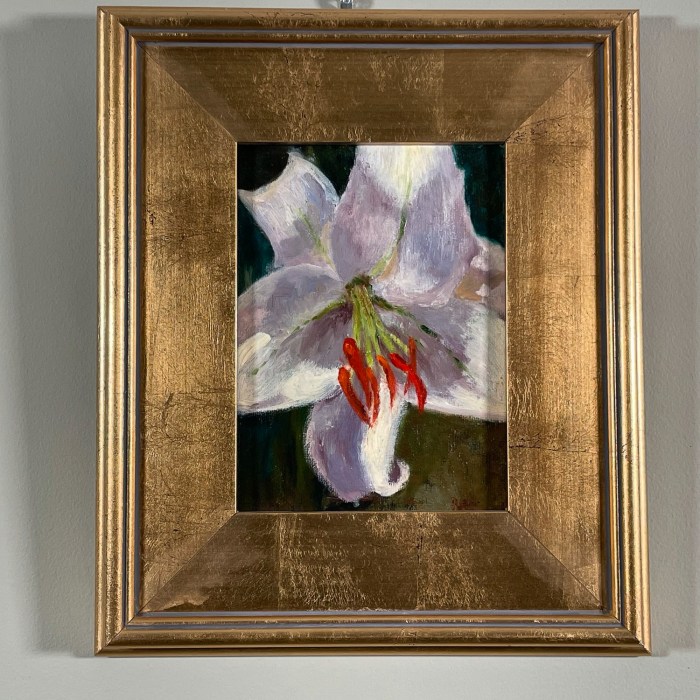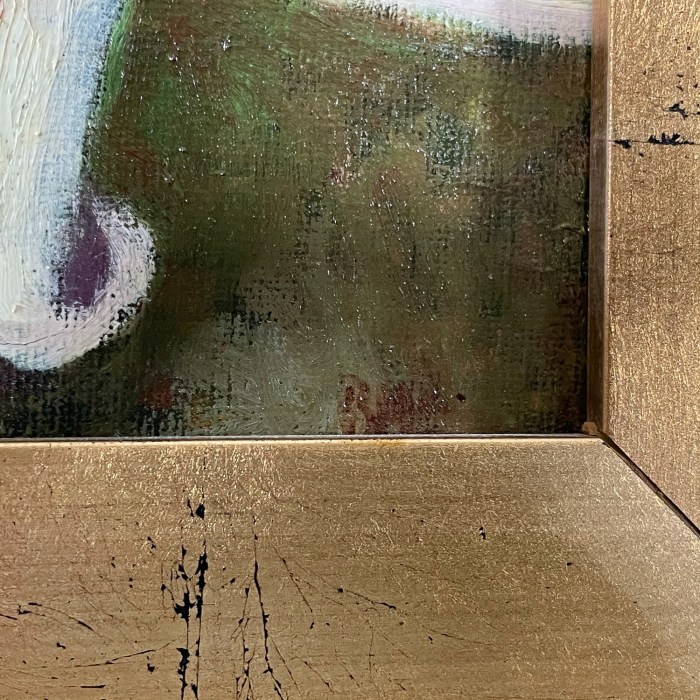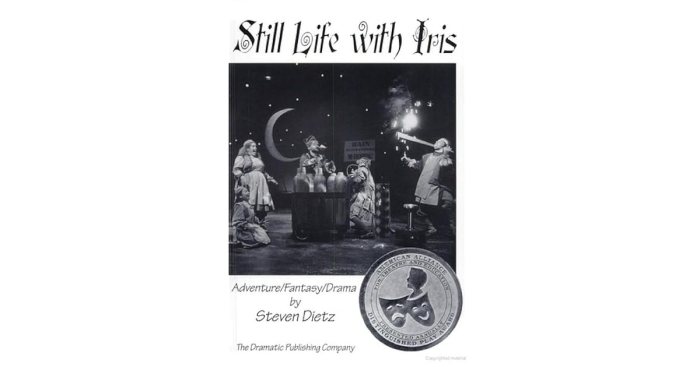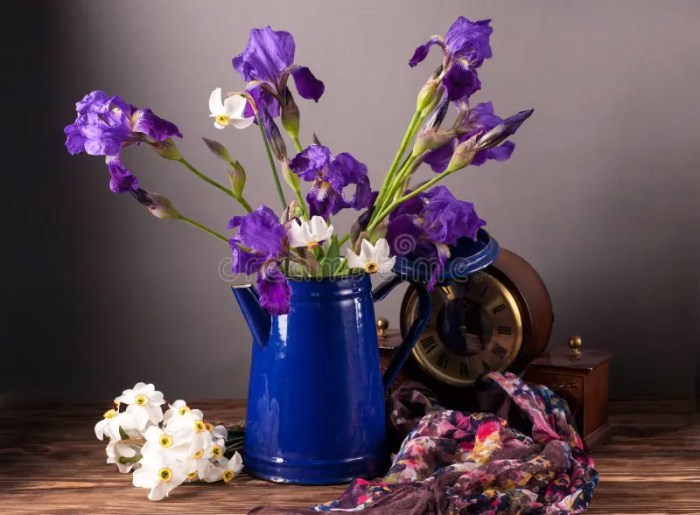Still life with iris synopsis – In the realm of still life painting, the iris has emerged as a captivating subject, inspiring countless works of art throughout history. From its delicate petals to its rich symbolism, the iris has played a pivotal role in shaping the genre, leaving an enduring legacy in the world of art.
This comprehensive synopsis explores the captivating world of still life paintings featuring irises, delving into their composition, symbolism, notable artists, and contemporary interpretations. Join us as we uncover the secrets behind these timeless masterpieces and unravel the beauty and significance of the iris in still life art.
Overview

Still life paintings are a genre of art that depict inanimate objects arranged in a specific composition. These objects can include fruits, flowers, food, and other everyday items. Still life paintings have been popular throughout history, with artists using them to explore themes of beauty, decay, and the passage of time.
Irises are a popular subject in still life paintings. These flowers are known for their delicate beauty and vibrant colors. They can be arranged in a variety of ways to create different effects. For example, a single iris can be placed in a vase to create a simple and elegant composition.
Alternatively, a group of irises can be arranged in a more complex arrangement to create a more dramatic effect.
Popularity of Irises in Still Life Paintings
There are several reasons why irises are such a popular subject in still life paintings. First, they are beautiful flowers that can add a touch of elegance to any composition. Second, they are relatively easy to paint, making them a good choice for beginner artists.
Third, irises have a long history of being associated with symbolism, making them a rich subject for exploration.
Composition and Techniques

In still life paintings featuring irises, artists employ distinct compositional strategies and techniques to showcase the delicate beauty and expressive qualities of these flowers.
The arrangement of objects within the composition is crucial. Typically, the irises are placed prominently in the foreground, drawing the viewer’s attention to their intricate petals and vibrant colors. The background is often kept simple, with minimal distractions, allowing the flowers to take center stage.
Color, Light, and Shadow
Color plays a significant role in these paintings. The vibrant hues of the irises contrast beautifully with the more muted tones of the background. Artists use light and shadow to enhance the three-dimensionality of the flowers, creating a sense of depth and texture.
Balance and Harmony
The overall composition is carefully balanced to create a sense of harmony and visual appeal. The placement of the irises, along with other objects in the painting, contributes to a harmonious arrangement that is both pleasing to the eye and evocative of the natural beauty of these flowers.
Symbolism and Interpretation: Still Life With Iris Synopsis

Irises, with their vibrant hues and graceful forms, have long held symbolic significance in art, particularly in still life paintings. Their presence in these compositions invites viewers to contemplate their deeper meanings, influenced by cultural, historical, and personal contexts.
Placement and Arrangement
The placement and arrangement of irises within a still life can convey a range of emotions and messages. Irises positioned centrally, for instance, may symbolize a sense of balance and harmony. Conversely, flowers placed off-center or in asymmetrical compositions can evoke a feeling of tension or disharmony.
Color
The color of irises also plays a crucial role in their interpretation. Purple irises, associated with royalty and spirituality, convey a sense of reverence and awe. Blue irises, representing faith and hope, evoke a feeling of serenity and tranquility. Yellow irises, symbolizing joy and optimism, bring a sense of warmth and cheer to the composition.
Cultural and Historical Contexts
The interpretation of irises in still life paintings is also influenced by cultural and historical contexts. In Western art, for example, irises have been associated with the Virgin Mary, representing purity and innocence. In Japanese culture, irises are considered a symbol of warriors and courage, often depicted in prints and paintings.
Notable Artists and Examples

Throughout art history, numerous renowned artists have captured the beauty and symbolism of irises in their still life paintings. Each artist brings their unique style and interpretation to these works, resulting in a diverse range of artistic expressions.
Vincent van Gogh
Vincent van Gogh is one of the most celebrated artists who depicted irises in his still life paintings. His famous work, “Vase with Irises” (1889), showcases his bold brushstrokes and vibrant colors. Van Gogh’s irises are characterized by their expressive and dynamic forms, conveying a sense of movement and energy.
Georgia O’Keeffe
Georgia O’Keeffe, known for her large-scale flower paintings, often featured irises as her subject. Her “Iris” series, created in the 1920s and 1930s, presents close-up views of these flowers, revealing their intricate details and subtle nuances. O’Keeffe’s irises are often depicted in a simplified and stylized manner, emphasizing their organic forms and symbolic significance.
Claude Monet, Still life with iris synopsis
Claude Monet, a master of Impressionism, incorporated irises into his garden scenes. His painting “Irises” (1914-1917) captures the fleeting effects of light and atmosphere in his garden at Giverny. Monet’s irises are rendered in soft, pastel colors, creating a serene and tranquil ambiance.
Exploring the serene beauty of a still life with irises, we delve into the intricate details of its petals and stems. This captivating image evokes a sense of tranquility and wonder. However, our attention is momentarily drawn to the fascinating structure of the radius and ulna, bones of the forearm that are depicted in an anterior view . The harmonious interplay of these elements adds depth and complexity to the overall composition, ultimately enhancing our appreciation for the beauty of the natural world.
Henri Fantin-Latour
Henri Fantin-Latour, a French artist known for his still life paintings of flowers, often featured irises in his compositions. His “Still Life with Irises” (1884) showcases his delicate and refined brushwork. Fantin-Latour’s irises are depicted with a naturalistic precision, capturing their graceful forms and delicate textures.
Contemporary Interpretations

In contemporary art, artists are reimagining the still life genre with irises as a subject in innovative ways. They explore new techniques, materials, and perspectives to push the boundaries of traditional still life painting.
Digital Manipulation and Collage
Some contemporary artists use digital manipulation and collage to create surreal and abstract still lifes with irises. They combine digital imagery, photography, and traditional painting techniques to create unique and visually striking works.
Mixed Media and Sculpture
Other artists incorporate mixed media and sculpture into their still life compositions with irises. They use found objects, fabrics, and other materials to create three-dimensional and tactile works that engage multiple senses.
Unusual Perspectives and Cropping
Contemporary artists also experiment with unusual perspectives and cropping in their still lifes with irises. They may focus on specific details of the flower, such as its petals or stamens, or capture the flower from unexpected angles to create a sense of intrigue and mystery.
Answers to Common Questions
What is the significance of irises in still life paintings?
Irises have long been associated with hope, faith, and purity. In still life paintings, they often symbolize the beauty and fragility of life.
Who are some notable artists who have created still life paintings featuring irises?
Vincent van Gogh, Georgia O’Keeffe, and Claude Monet are just a few of the many renowned artists who have depicted irises in their still life works.
How have contemporary artists reinterpreted the still life genre with irises as a subject?
Contemporary artists have experimented with new techniques and materials, such as collage, mixed media, and digital art, to create innovative and thought-provoking still life paintings featuring irises.
